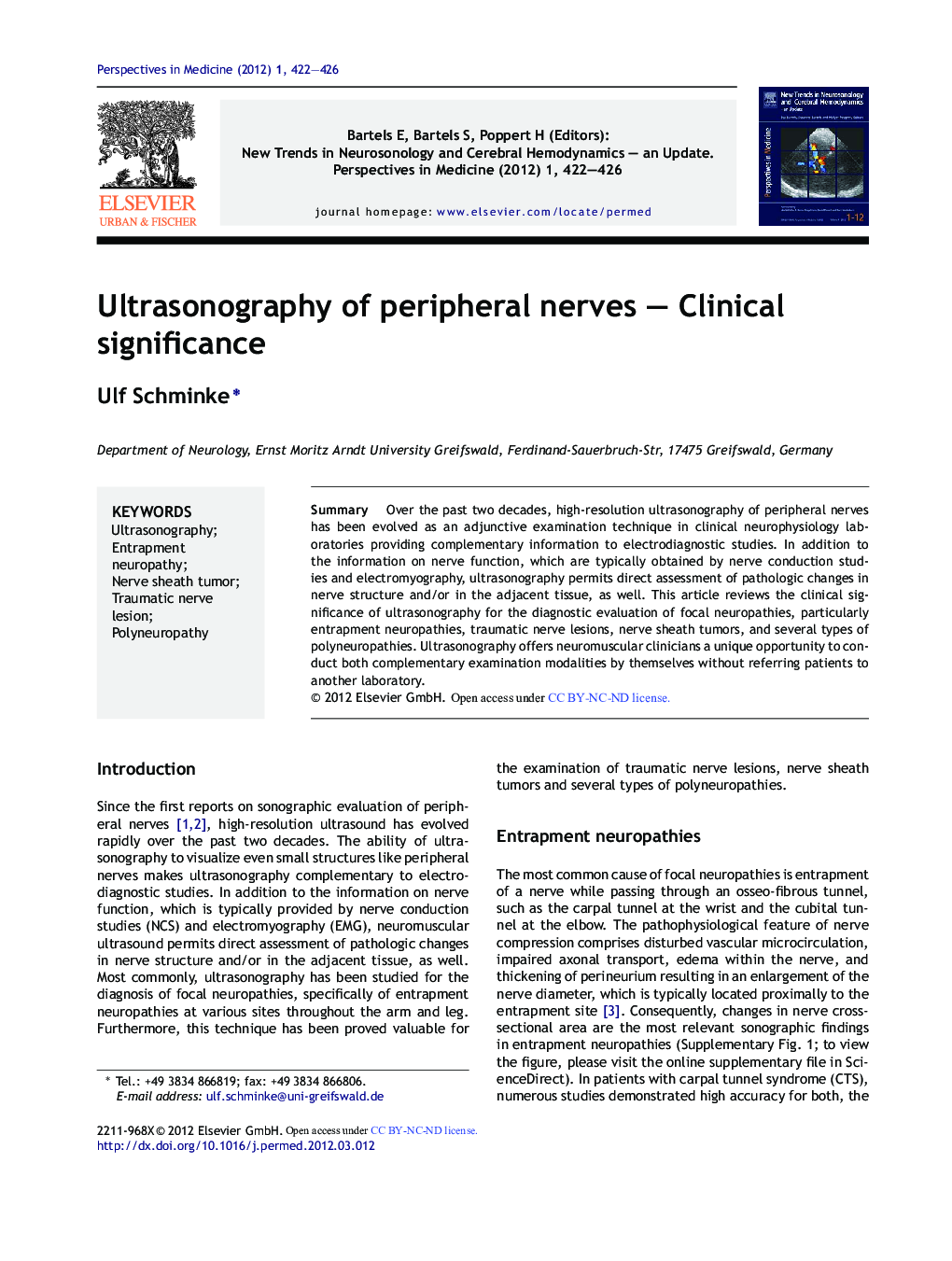| Article ID | Journal | Published Year | Pages | File Type |
|---|---|---|---|---|
| 331858 | Perspectives in Medicine | 2012 | 5 Pages |
SummaryOver the past two decades, high-resolution ultrasonography of peripheral nerves has been evolved as an adjunctive examination technique in clinical neurophysiology laboratories providing complementary information to electrodiagnostic studies. In addition to the information on nerve function, which are typically obtained by nerve conduction studies and electromyography, ultrasonography permits direct assessment of pathologic changes in nerve structure and/or in the adjacent tissue, as well. This article reviews the clinical significance of ultrasonography for the diagnostic evaluation of focal neuropathies, particularly entrapment neuropathies, traumatic nerve lesions, nerve sheath tumors, and several types of polyneuropathies. Ultrasonography offers neuromuscular clinicians a unique opportunity to conduct both complementary examination modalities by themselves without referring patients to another laboratory.
